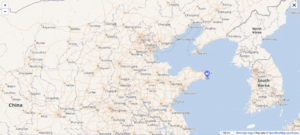- Suriname is emerging as a new player in the South American oil sector, driven by its deep-water discoveries;
- The rise of new producers is challenging OPEC’s dominance and could force the organization to rethink its production and pricing strategies in the market;
- Rising oil production could have direct impacts on oil prices and the regional economy.
With newly discovered oil reserves, countries like Suriname are driving a new wave of energy production in South America.
While Brazil is the region’s largest exporter, and Guyana has already cemented its position with large offshore reserves, it is Suriname that is now emerging as an unexpected player, attracting global attention.
The country may be the missing piece in transforming South America into an oil powerhouse, but there are significant challenges to consider.
Why is Suriname Important to South America’s Oil Future?
Suriname’s deep waters hold billions of barrels of oil, discoveries that put the small country on a fast track to becoming a major exporter.
Companies such as TotalEnergies and APA Corporation are already investing heavily in its infrastructure, attracted by the combination of promising reserves and a relatively stable political environment.
Suriname has an advantage: it can learn from the mistakes and successes of neighbors such as Guyana, which in just a few years has become one of the world’s most competitive exporters.
In addition, Suriname is seeking to adopt advanced technologies early on, such as smart sensors that ensure efficient and sustainable extraction, as well as automated platforms for ultra-deep waters.
If Suriname fulfills its potential, it will reinforce the narrative that South America is entering a new era of global relevance in the energy market, challenging traditional powers such as the Middle East and Russia.
Why South America Could Become an Oil Powerhouse?
South America has a long history with the oil industry, dating back to the early 20th century, when oil became a key factor in the economic and political development of the region.
Countries such as Venezuela, Brazil and Argentina were pioneers in the exploitation of their vast reserves and have played crucial roles in the global oil market over the decades.
Venezuela, for example, was one of the world’s largest oil economies during the 20th century, while Brazil has established itself as a leader in offshore production, with discoveries of pre-salt reserves that have placed the country among the largest global producers.
To understand how the South American continent has consolidated itself in this way, it is important to analyze the scenario in a broader sense:
Guyana
- Rapid Rise: Guyana, previously unknown in the energy sector, has become an example of success after the discovery by ExxonMobil in 2015. With production of 380 thousand barrels per day in 2022 and estimates of surpassing 1 million barrels by 2027, Guyana is demonstrating impressive growth.
- Cutting-edge technology: The use of semi-submersible platforms and advanced digital processing systems are fundamental for deep-water exploration in Guyana.
- Challenges and Opportunities: Despite the oil boom, the low population density and lack of infrastructure present challenges. Even so, Guyana has become a point of interest for large investors and serves as a model and warning for other countries in the region.
Brazil:
- Strength and Innovation: Brazil is a veteran in the energy sector, standing out for its pre-salt exploration with reserves of 15 billion barrels of oil. Production exceeded 3 million barrels per day in 2023.
- Technology and Sustainability: The use of underwater drones and artificial intelligence for geological mapping is a Brazilian differential. Projects to reduce the carbon footprint also position the country as a leader in responsible energy transition.
- Challenges: Economic dependence on oil is a risk amid the global transition to renewable energy.
Argentina:
- Vaca Muerta on the Rise: The formation of Vaca Muerta, one of the largest shale reserves in the world, allows Argentina to increase its production of shale oil and gas. Production reached record highs in 2023 and 2024 and is on track to reach 1 million barrels per day by 2030.
- Economic Challenges: Economic instability and poor infrastructure pose challenges, but partnerships with companies such as Chevron and Shell are essential to sustain growth.
- Export Potential: If the economy stabilizes, Argentina could become a significant energy exporter to Asian markets.
Suriname:
- Discoveries and Reserves: Suriname, with discoveries made by TotalEnergies and APA Corporation since 2020, is positioning itself as a new player. Its deepwater reserves are estimated at over 6 billion barrels of oil.
- Strategy and Technology: Suriname’s cautious approach seeks to balance exploration and sustainability. Automated drilling and 3D mapping technology are crucial to efficient exploration.
- Challenges and Potential: Although still in its early stages, the country faces challenges such as limited infrastructure and the need to diversify its economy. If successful, Suriname could solidify the region as a new global oil frontier.
Is the Energy Transition at Stake for Suriname and South America?
Despite the excitement surrounding oil discoveries, the global energy transition poses a dilemma for Suriname and its neighbors. As a new player in the global market, the country is entering the scene just as the world is pushing for cleaner and sustainable alternatives.
Suriname is therefore faced with the choice of whether to invest all of its resources in oil or use it as a springboard to finance renewable sources.
Initiatives such as carbon capture and storage could help mitigate environmental impacts and position the country as a responsible producer, but these technologies are still expensive and require external support.
At the same time, if South American countries do not adopt a balanced approach, they could face climate sanctions and lose competitiveness as the world seeks to transition to cleaner energy sources.
On the other hand, global dependence on oil and gas is far from over…
The invasion of Ukraine has highlighted global dependence on oil and natural gas because the conflict has highlighted how international energy markets remain highly vulnerable to geopolitical shocks.
Russia, one of the world’s largest exporters of natural gas and oil, has faced severe sanctions that have restricted its ability to supply global markets, especially in Europe. This has resulted in an energy crisis, with record energy prices, supply disruptions and a race for alternative sources.
Despite pressure to accelerate the transition to renewable sources, many countries, especially in Europe, have been forced to increase their use of fossil fuels to address the energy deficit. Natural gas, once considered a “bridge” for the energy transition, has once again become central, with investments in liquefied natural gas (LNG) infrastructure and the reopening of coal-fired power plants to meet demand.
This scenario has shown that, although renewable energy is expanding, it is still not sufficient to replace fossil fuels on a global scale, especially in times of crisis. In addition, the increasing cost and complexity of accessing energy have driven countries to seek new suppliers, creating opportunities for emerging nations such as Suriname in the oil and gas market.
What are the Risks and Obstacles to the New Oil Era?
Not everything points to a promising future. South America’s history with oil is marked by examples of mismanagement and excessive economic dependence.
- Venezuela: Despite having the world’s largest oil reserves, production has fallen from more than 3 million barrels per day in the 2000s to around 700,000 in 2023, due to sanctions and mismanagement.
- Colombia and Ecuador: Both are facing declines due to depletion of reserves and lack of new investment. Fiscally constrained Ecuador is struggling to modernize its energy sector. Regional
- Implications: The decline of these countries creates an opportunity for new players such as Guyana and Suriname, but also presents geopolitical risks for the region.
These points provide a comprehensive overview of the main players and dynamics of the oil sector in South America, highlighting how Suriname could emerge as a new hub for oil production and export.
Venezuela, with the world’s largest reserves, is a constant reminder of how a lack of economic diversification, misguided policies and corruption can lead to collapse.
In addition, Suriname and other new players face logistical and financial challenges. Building the infrastructure needed to export oil on a large scale requires billions of dollars in investment and efficient public administration, which can be a weakness in smaller countries.
As mentioned above, another limiting factor is the growing international pressure for decarbonization. With the energy transition gaining momentum, global demand for oil could begin to decline in the coming decades, making new investments less profitable in the long term.
What Could Suriname’s Rise Have for OPEC?
The rise of new oil producers such as Suriname and Guyana could have significant implications for OPEC (the Organization of the Petroleum Exporting Countries), which has played a central role in regulating the global market for decades.
As oil production and exports from these countries increase, OPEC may face challenges related to balancing supply and demand, putting pressure on its members to adjust production and pricing strategies.
This is because, while OPEC has historically sought to control production to keep prices stable and artificially high, the entry of new players with significant reserves could dilute the organization’s power in the market and affect its ability to influence oil prices.
In addition, with the growing relevance of non-OPEC producers, such as Suriname, the organization may be forced to rethink its policies and strategic alliances.
OPEC may face tougher competition, which could reduce its ability to react to price changes or supply crises, directly impacting the global economy and energy markets.
Angola’s recent exit from OPEC has further increased pressure on the group, reducing its share of the global oil market. Meanwhile, the organization is trying to keep its members united and maintain its relevance, but the growing presence of producers outside the cartel – both big names already established and new players, such as Brazil and Guyana – threatens its role as the main regulator of the sector.
On the other hand, a greater supply of oil in the world tends to bring advantages to consumers, especially the poorest populations. With lower energy prices, fuels become more affordable, transportation costs decrease and the prices of basic products can stabilize. In other words, even if OPEC loses some of its influence in the market, increased production can bring direct benefits to those who need it most.
Can South America Become an Oil Powerhouse?
South America’s potential to become an oil powerhouse is real, but it depends on a number of variables: from Suriname’s success as an emerging oil exporter to the region’s ability to balance economic growth with climate commitments.
If countries like Suriname harness their reserves responsibly, diversifying their economies and adopting clean technologies, South America could occupy a central place in the global energy market.
Otherwise, it could repeat past mistakes, jeopardizing its future in a world increasingly focused on renewable energy.
How is Suriname Preparing for Domestic Oil Production to Benefit Its Citizens?
Changes in Suriname have impacts that go beyond its borders and international oil companies.
At the local level, oil brings hope for jobs, economic growth and infrastructure improvements. Suriname can channel royalties from production into critical areas such as health and education, significantly improving the quality of life of its population.
However, there is a risk that these benefits will not be distributed fairly or will be overshadowed by environmental and social problems. A large-scale spill, for example, could compromise local biodiversity and harm communities dependent on fishing activities.
That is why the development of Suriname’s oil sector is important not only for the global economy, but also as an example of how new exporters can shape their policies to benefit both local citizens and global consumers.
That is why Suriname’s President Chan Santokhi has announced a “royalty for all” program as part of a strategy to distribute the profits from the country’s newly discovered oil and gas reserves.
With the country expected to generate up to US$10 billion over the next 10 to 20 years, Santokhi has said that each citizen will receive US$750 in a savings account, with an interest rate of 7% per year, as a way of ensuring that everyone benefits from this wealth.
The move aims to avoid the typical problems of the “Dutch disease” or “resource curse“, which have affected other resource-rich nations such as Venezuela. In addition, Suriname has established a sovereign wealth fund to manage this new influx of resources, following the example of Norway, which has managed to transform its wealth into economic success.










[…] ny stor olieeksportør. Milliarder af tønder olie menes at ligge i dybderne, hvilket ifølge Atlas Report sætter landet på en hurtig vej mod at blive en betydelig spiller på det globale […]